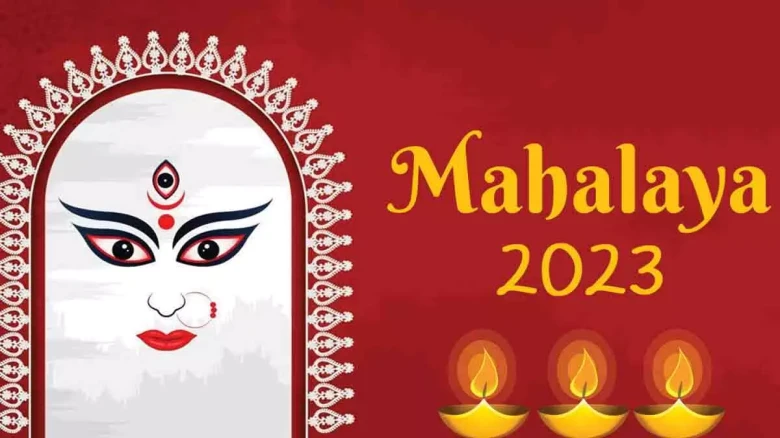Regional

The word "Mahalaya" is rooted in the Sanskrit language, stemming from the amalgamation of "Maha" and "Alaya," which together mean the...
Digital Desk: Mahalaya, a day of profound spiritual significance in the Hindu calendar, is observed with immense fervor and devotion in the Indian subcontinent, particularly in India and Bangladesh. It heralds the commencement of the highly anticipated Durga Puja festival, a celebration symbolizing the victory of good over evil. This year, Mahalaya falls on Saturday, October 14, 2023.
The word "Mahalaya" is rooted in the Sanskrit language, stemming from the amalgamation of "Maha" and "Alaya," which together mean the "Great Abode" or the "Home of the Goddess." It is a day believed to mark the commencement of the goddess Durga's journey from Kailash, the abode of Lord Shiva, to Earth, where she descends upon her devoted followers. This event is vividly recounted in the mythical narrative known as "Mahishasura Mardini."
History and Significance of Mahalaya (Durga Puja)
The essence of Mahalaya revolves around a legend from the "Devi Mahatmya" (The Glory of the Goddess), an ancient Sanskrit text that forms a part of the Markandeya Purana. This text recounts the captivating story of the goddess Durga and her heroic battle against Mahishasura, a fearsome buffalo demon who wreaked havoc on both the heavens and Earth.
Mahishasura granted invincibility through a boon from Lord Brahma, posed a formidable threat to the gods, overpowering them with ease. Unable to conquer him individually, the gods united their powers to create the formidable goddess Durga, endowing her with unparalleled strength and an arsenal of divine weapons. The relentless battle between Mahishasura and Durga raged for nine days and nights, concluding with the demon's defeat on the tenth day, a triumph celebrated as Vijayadashami.
Celebrations of Mahalaya
Mahalaya is marked by unparalleled enthusiasm and devotion, particularly in West Bengal, where it is woven into the very fabric of the culture and religion.
One of the most iconic and widely observed customs on Mahalaya is the recitation of "Mahishasura Mardini," a hymn derived from the "Devi Mahatmya." People across the region rise before dawn to tune in to a special radio broadcast of this sacred hymn, a tradition that dates back to 1931. It is considered an auspicious way to commence the day, believed to invoke blessings from the goddess Durga.
Devotees engage in prayers, fasting, ritual baths in the holy Ganges River, and cultural programs, among other activities, to celebrate this auspicious day. Traditional Bengali dishes, sweets, and delicacies are lovingly prepared and shared with family and friends, forming an integral part of the festivities.
While Mahalaya may be celebrated with slight variations in customs and traditions across different regions of India, the common thread binding the celebration is the deep reverence for goddess Durga and the eager anticipation of the grand Durga Puja festival that follows. It is a time when people from all walks of life unite to celebrate the victory of good over evil and to seek the blessings and divine protection of the goddess.
In this age-old tradition, Mahalaya continues to be a powerful reminder of the enduring cultural and spiritual ties that bind communities across the Indian subcontinent, encapsulating the essence of hope, devotion, and triumph over adversity.
Leave A Comment